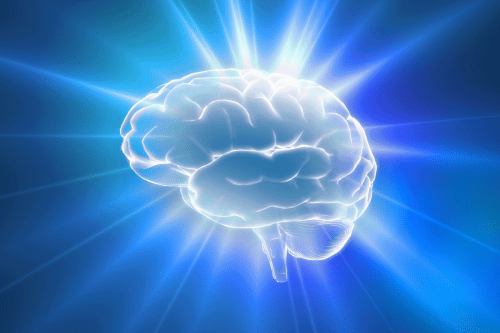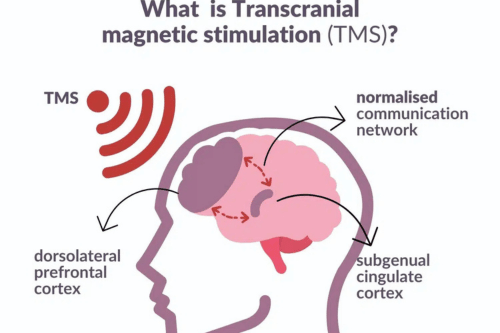Understanding the TMS Dip: Causes and Effective Strategies for Relief
Transcranial Magnetic Stimulation (TMS) therapy is a revolutionary treatment that has emerged as an effective alternative for individuals struggling with major depressive disorder and other mental health conditions. TMS therapy offers hope, especially for those with treatment-resistant depression who have not experienced relief from traditional treatments like antidepressant medications or talk therapy.
However, during the early stages of treatment, some patients encounter what is known as a TMS dip—a brief period where symptoms may temporarily worsen before showing improvement. This article provides an in-depth look into the TMS dip, its causes, duration, management strategies, and what patients can expect on their journey toward recovery.
What is the TMS Dip?
The TMS dip refers to a temporary period during which some patients experience a slight worsening of depression symptoms or heightened anxiety symptoms in the early stages of TMS therapy. While this may be alarming to some, the dip occurs as part of the brain’s adjustment to the magnetic pulses delivered during repetitive transcranial magnetic stimulation (rTMS). For most TMS patients, this dip is a normal and short-lived phase of the treatment process.
When TMS treatment begins, magnetic energy stimulates specific regions of the brain, such as the prefrontal cortex, which is involved in regulating mood and emotional responses. This stimulation can temporarily disrupt existing communication patterns in the brain, leading to a temporary exacerbation of symptoms like low mood, irritability, or heightened anxiety.
Some patients experience side effects such as mild headaches or disruptions in sleep patterns during this phase. It’s important to understand that this dip does not signal treatment failure but is rather a sign that the brain is actively working to create new neural pathways.
Why Does the TMS Dip Occur?
The TMS dip occurs because the brain needs time to adapt to the new stimuli introduced during treatment. TMS therapy uses magnetic pulses to target specific areas of the brain associated with depression, stimulating the activity of nerve cells that may have been underactive due to chronic depressive states. This disruption can cause an initial sense of imbalance, which some patients interpret as worsening symptoms.
As the brain forms new communication patterns, it begins to regulate mood more effectively, which eventually leads to an improvement in depression symptoms. However, before these new pathways fully take hold, it is not unusual for patients to feel emotionally unsettled or experience increased anxiety. This adjustment phase is what gives rise to the TMS dip.

How Long Does the TMS Dip Last?
For most individuals, the TMS dip is temporary, typically lasting up to two weeks. However, the duration can vary depending on the severity of the patient’s mental health condition and the overall treatment process. Patients with treatment-resistant depression or those dealing with obsessive-compulsive disorder (OCD) may take slightly longer to notice improvements.
The dip may feel discouraging, but it is essential to stick with the prescribed TMS sessions. Consistent treatment ensures that the brain receives the necessary stimulation to build new, healthier neural networks. Many patients report that they feel significant relief after the dip passes, and their emotional well-being begins to stabilize as treatment progresses.
Managing the TMS Dip

Navigating the TMS dip can feel challenging, but self-care practices and open communication with a healthcare provider can ease the process. Here are a few strategies to help manage the dip effectively:
1. Maintain Healthy Sleep Patterns
Disruptions in sleep patterns can amplify depressive symptoms. Prioritize regular sleep schedules, practice good sleep hygiene, and avoid stimulants like caffeine before bed.
2. Engage in Talk Therapy
Combining TMS therapy with talk therapy can help patients process emotions and cope with temporary setbacks during treatment. Talk therapy also provides tools to handle increased anxiety that may arise during the dip.
3. Practice Mindfulness and Relaxation Techniques
Mindfulness practices such as meditation or deep breathing exercises can help relieve stress and regulate mood. These techniques support the brain as it adjusts to the changes introduced by magnetic pulses.
4. Communicate with Your Healthcare Provider
If the dip occurs with heightened intensity, don’t hesitate to reach out to your healthcare team. Your provider can adjust TMS sessions or recommend additional interventions to manage side effects like mild headaches or increased anxiety.
What Exactly Does TMS Do to the Brain?

Transcranial magnetic stimulation (TMS) is a non-invasive procedure that uses magnetic waves to stimulate the brain’s nerve cells. By targeting the prefrontal cortex, TMS treatment enhances the release of neurotransmitters involved in mood regulation, such as serotonin and dopamine. This helps relieve symptoms of major depressive disorder and other mental health conditions.
The stimulation also promotes the formation of new neural pathways, which supports long-term emotional balance. Over time, patients experience a significant reduction in depressive episodes as these new pathways strengthen. Unlike antidepressant medications, which can take weeks to show results and often cause sexual dysfunction or other side effects, TMS therapy offers a more targeted approach with fewer risks.
Side Effects During TMS Therapy
Although TMS therapy is generally well-tolerated, some patients experience minor side effects during their sessions. These include:
Mild headache
Scalp discomfort near the site of the magnetic coil
Temporary changes in sleep patterns
Heightened anxiety during the temporary period of the dip
These side effects are usually mild and subside as the brain adapts to the magnetic pulses. Many patients find that the discomfort is manageable and outweighed by the positive results they experience after completing the treatment process.
Positive Outcomes After the TMS Dip
Despite the challenges posed by the TMS dip, the long-term outcomes of TMS therapy are highly encouraging. Patients who complete the treatment often report a significant reduction in depression symptoms and improved overall mental health.
One of the benefits of TMS is that it helps restore emotional balance without the side effects associated with antidepressant medications. As the brain develops new communication patterns, many patients experience improved mood, better sleep patterns, and enhanced ability to manage stress.
For individuals with treatment-resistant depression, TMS therapy offers a path to relief when other treatments have failed. The creation of new pathways within the brain promotes lasting change, reducing the risk of relapse and helping patients maintain mental wellness over time.
Conclusion: Embrace the Path to Recovery
The TMS dip is a temporary but manageable challenge that many patients face during their journey toward recovery. By understanding that the dip is a normal part of the brain’s adjustment to repetitive transcranial magnetic stimulation, patients can stay motivated to complete their TMS treatment. With the right support and self-care practices, the dip will pass, paving the way for improved mental health and a brighter future.
At Revival Mental Health, we understand the emotional challenges that come with mental health recovery. Our team of experienced professionals is here to guide you through every step of your TMS journey, including the dip. If you or a loved one is considering TMS therapy for major depression or another mental health condition, contact us today to learn more about how this revolutionary treatment can change your life.





